Your Call?
Which two of Kevin’s images are the strongest? Yes, I know that this is a very difficult question. Please leave a comment and let us know why you made your choices. I will share my two favorites with you here tomorrow.
Supporting My Efforts Here
If you enjoy and learn from the blog, please consider using one of my affiliate links when purchasing new gear. It will never cost you a single penny. To support my effort here, please order from B&H by beginning your search here. Or, click here, to order from Bedfords and enter the discount code BIRDSASART at checkout to receive 3% cash back to your credit card and enjoy free Second-Day Air Fed-Ex shipping. It is always best to write for advice via e-mail.
In many cases, I can help you save some serious dollars.
Live Life to the Fullest
Join an Instructional Photo-Tour. Better yet, sign up for both Homer trips.
Don’t Look Now
Don’t look now, but this post marks 28 consecutive days with a new educational post written just for you.
What’s Up?
Flights and good connections when flying from Podunk airports — sorry, Bismarck, ND, are often problematic. There were no early flights to anywhere the would get m home so I left BIS on the 1:51pm American Airlines flight, connected at DFW, and got into Orlando at 9:15pm and was home — thanks to Jim, at 11:30pm. While at gate at BIS, I purchased a 2.25 ounce pack of shelled, Vinegar, Lime, and Sea Salted pistachio nuts before my first flight for $7.59. That worked out to a shade under $54.00/pound. At least they were good and relatively healthy.
Today is Friday 26 April 2024. I will head down to the lake to check on the three crane chicks that were alive when I left and see what else is happening. Then I have lot of work to catch up on. Including getting started on my 2023 axes. Whatever you are doing, I hope that you too have fun. There is a slim chance that I might make anther trip out west next year in search of the elusive Sage Grouse. If you know of a dependable lek for that species, Kevin would be thrilled to learn about it via an e-mail to yours truly.
Thanks Kevin!
There is no way that Kevin could he been a more accommodating host and guide. He was beyond helpful. He picked me up a the airport, did all the driving, and dropped us off at the airport yesterday. On Thursday afternoon he walked several miles at two different leks looking for the teleconverter that I lost 🙁 His knowledge of the chickens and the grouse and their leks is monumental. And he generously shared his home in Washburn, ND with us. Thank you Kevin. I hope that you and Colleen can make it to Florida next March so that I can reciprocate a least in part.
|
|
|
This image was created in June 2022 at McKenzie Slough, ND by good friend and multiple IPT veteran Kevin Hice. Working from a homemade floating blind, he used a Wimberley Head V-II-mounted Canon RF 600mm f/4 L IS USM lens, the RF Extender 1.4X, and the Canon EOS R3 Mirrorless Camera. ISO 6400. 1/3200 sec. at f7.1. Be sure to click on the image to see a larger and sharper high res version. Image #1: Western Grebe sunrise silhouette |
Wow!
Kevin routinely gets into the water with his floating blind 40 minutes before the sun comes up. He has an old pair of bins with him and uses them to spot the birds, often in silhouette. He explained that this species is usually very wary of him in his blind once it gets light. Talk about being in the right place at the right time; Kevin’s hard work paid off with this rather amazing image.
|
|
|
This image was created in December 2022 at Yellowstone National Park, MT by good friend and multiple IPT veteran Kevin Hice. He used the handheld Canon RF 100-500mm f/4.5-7.1 L IS USM lens and the Canon EOS R3 Mirrorless Camera. ISO 3200: 1/2500 sec. at f/8 in Manual mode. Be sure to click on the image to see a larger and sharper high res version. Image #2: Bull Elk |
Blowing Snow!
Blowing snow from a huge snow plow that was clearing the road softened up the background for Kevin’s image of this majestically handsome bull elk. He heard the plow coming and thought that the elk would bolt, but it remained bedded down peacefully!
|
|
|
This image was also created in December 2022 at Yellowstone National Park, MT by good friend and multiple IPT veteran Kevin Hice. He used the handheld Canon RF 100-500mm f/4.5-7.1 L IS USM lens (at 400mm) with the Canon EOS R3 Mirrorless Camera. ISO 12800: 1/5000 sec. at f/7.1 in Manual mode. Be sure to click on the image to see a larger and sharper high res version. Image #3: Bull Moose |
Too Excited
In the excitement of the moment, a handsome bull Moose posing in the snow, Kevin lost track of both ISO and shutter speed. I have done the same thing many times. The good news is that the image was sharp and properly exposed. And the high ISO noise was easily controlled.
|
|
|
This image was created in May 2023 near Washburn, ND by good friend and multiple IPT veteran Kevin Hice. Working from a homemade floating blind, he used the Wimberley Head V-II-mounted Canon RF 400mm f/2.8 L IS USM lens and the Canon EOS R5 Mirrorless Camera. ISO 2500: 1/1600 sec. at f/2.8 in Manual mode. Be sure to click on the image to see a larger and sharper high res version. Image #4: Wood Duck drake floating with its reflection |
Floating Blind Work
After Kevin explained the difficulties involved with working from a floating blind, I had no desire at all to try this technique even though the super low perspectives are to die for. Even as spring gets close to summer, the water in the sloughs is quite cold. Though Kevin dresses warmly and wears heavy duty chest waders, the longest he can deal with the cold water is about 90 minutes. Not to mention that the only thing that is floating is the blind that supports his big lens. Kevin is always kneeling or standing in depths ranging from one to four feet, almost always slogging through deep muck. And if the wind comes up during the morning, getting himself and the blind out safely is always touch and go. Perhaps I wil get to try it before on a very calm day before they put me in a box.
The Purple Cheek Patch
Images of male Wood Ducks that do not feature the purple cheek patch will always be relegated to the runner up category. That is possible on sunny days only rarely.
|
|
|
This image was also created was created in May 2023 near Washburn, ND by good friend and multiple IPT veteran Kevin Hice. Working from a homemade floating blind, he used the Wimberley Head V-II-mounted Canon RF 400mm f/2.8 L IS USM lens and the Canon EOS R5 Mirrorless Camera. ISO 1600: 1/1600 sec. at f/2.8 in Manual mode. Be sure to click on the image to see a larger and sharper high res version. Image #5: Blue-winged Teal on log |
The Speculum Feathers
In a similar fashion, Blue-winged Teal photos that do not reveal the blue and green speculum feathers will never win any contests. These feathers are often revealed in flight photographs or images of stretching birds. A note on the very handsome perch: Kevin found it in Alaska on a road trip by truck and brought it back to North Dakota. He anchored it in his favorite slough; it has paid off quite handsomely.
|
|
|
This image was created in June 2023 near Washburn, ND by good friend and multiple IPT veteran Kevin Hice. Working from a homemade floating blind, he used the Wimberley Head V-II-mounted Canon RF 400mm f/2.8 L IS USM lens and the Canon EOS R5 Mirrorless Camera. ISO 500: 1/4000 sec. at f/2.8 in Manual mode. Be sure to click on the image to see a larger and sharper high res version. Image #6: Mallard blasting off |
What’s to Love About This Image?
1- The incredible splash.
2- The well timed press of the shutter button.
3- The perfect look-back head angle.
4- The ultra-low perspective.
5- The wings fully down takeoff pose.
6- The great view of the duck’s blue speculum.
7- The soft background and the soft green reflections.
8- The mirror image reflection.
Does anything about this image bug you? There is one thing that bugs me. I will share it here soon.
|
|
|
This image was created in July 2023 near Washburn, ND by good friend and multiple IPT veteran Kevin Hice. Working from a homemade floating blind, he used the Wimberley Head V-II-mounted Canon RF 600mm f/4 L IS USM lens and the Canon EOS R5 Mirrorless Camera. ISO 2000: 1/3200 sec. at f/6.3 in Manual mode. Be sure to click on the image to see a larger and sharper high res version. Image #7: Ruddy Duck in breeding plumage on log |
Luscious Colors
A male Ruddy Duck at the absolute peak of breeding plumage is a sight to behold. The chestnut red upperparts, the white face, the black cap, and the incredible azure-blue bill combine to make him one of the handsomest, showiest drakes in town each spring.
Note that with eye tracking, mirrorless camera bodies enable you to recompose as needed while continuing to track the bird’s eye. Be sure to move the lens slowly to avoid screwing up the tracking. Kevin properly recomposed by pointing his lens to the right to place the bird on the left side of the frame when the bird preened and looked back to our right.
|
|
|
This image was also created in July 2023 near Washburn, ND by good friend and multiple IPT veteran Kevin Hice. Working from a homemade floating blind, he used the Wimberley Head V-II-mounted Canon RF 600mm f/4 L IS USM lens and the Canon EOS R5 Mirrorless Camera. ISO 1250: 1/2500 sec. at f/5.6 in Manual mode. Be sure to click on the image to see a larger and sharper high res version. Image #8: Redhead hen with brood |
Same Rock, Different Cast of Characters
A week after Kevin made Image #7 (above), a hen Redhead with a brood of 15 chose to sit on the same rock in about 18 inches of water. When you’ve got a good horse, ride it! The clutch size for this species is usually 7-8 eggs, up to fourteen on occasion. In addition, they will often lay more eggs in the nests of as many as ten different species. And when another duck lays eggs in a Redhead’s nest (nest dumping), the hen will raise those ducklings along with their own. Even stranger, several Redheads hens may lay eggs in a dump nest, a nest that is never incubated. The record is 87 eggs in a single dump nest. This species nests in large marshes and builds bulky nests of dead grasses and reeds and lined with soft feathers. Sounds comfy.
Typos
With all blog posts, feel free to e-mail or to leave a comment regarding any typos or errors.

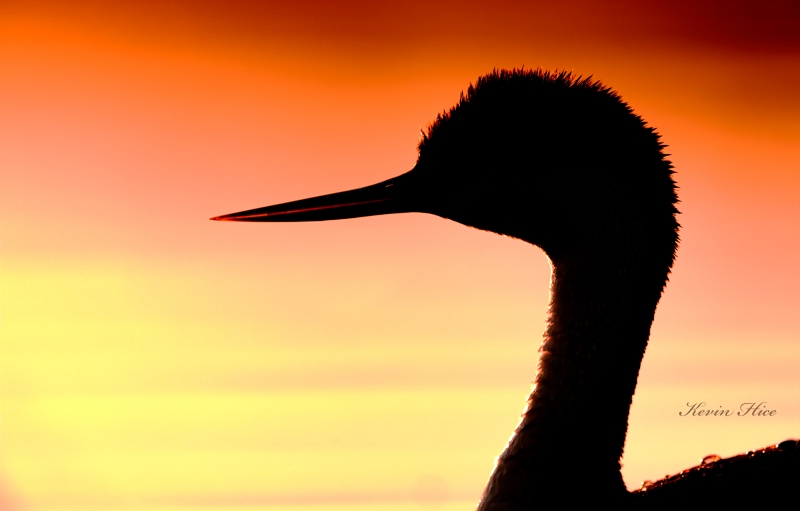
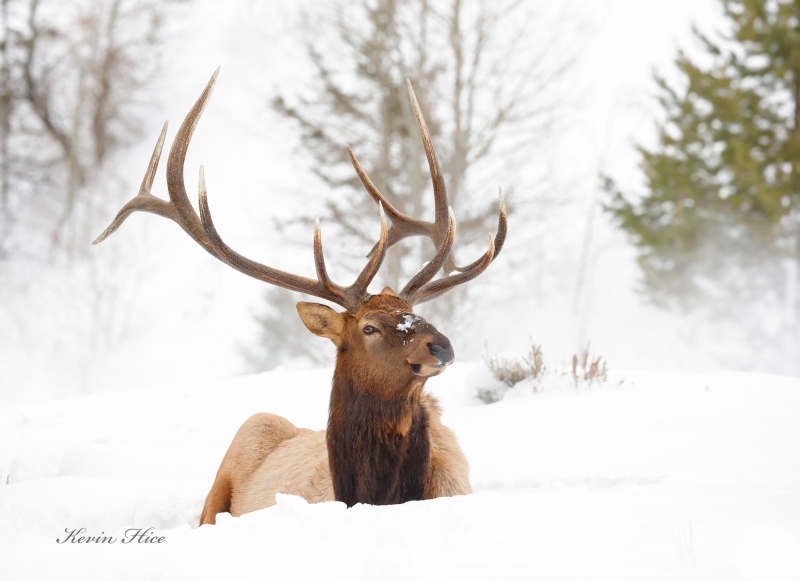
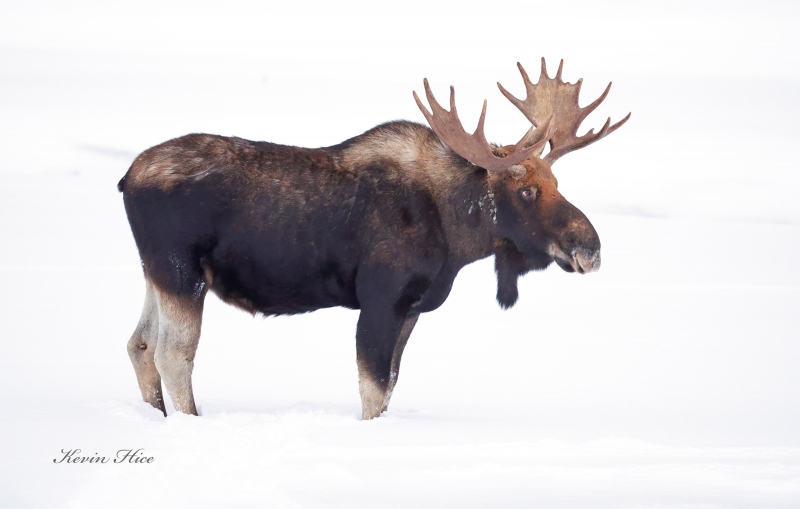
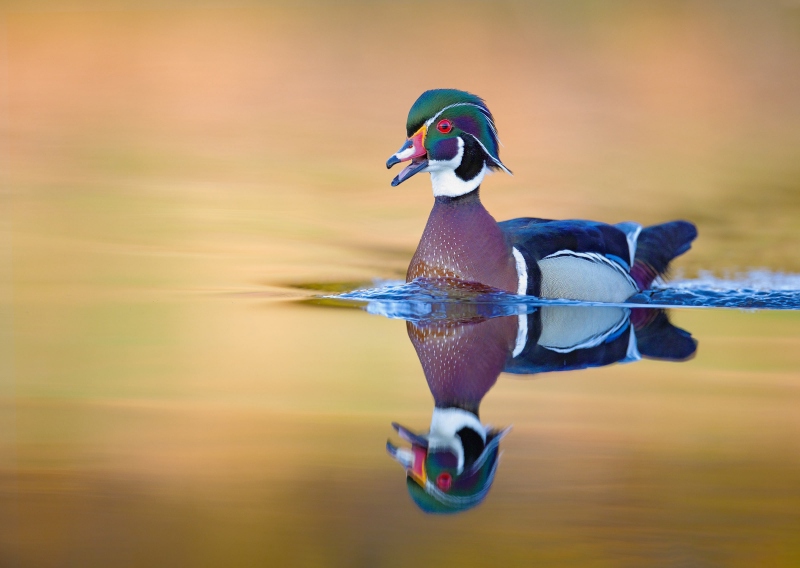
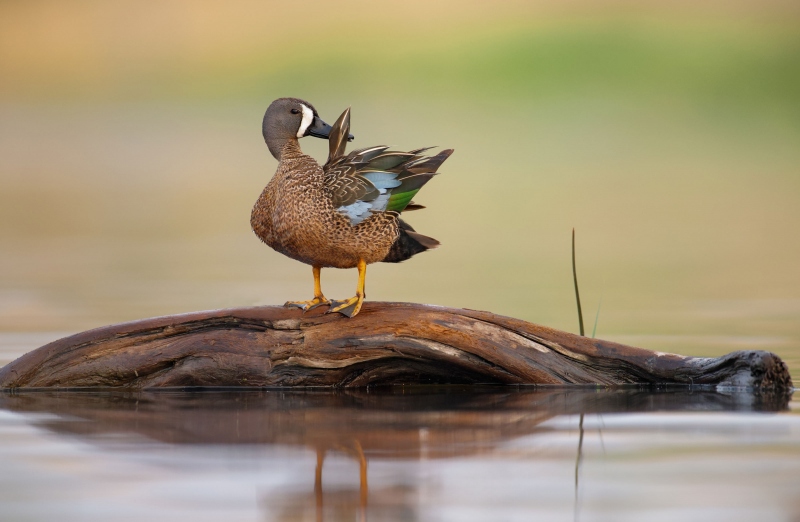
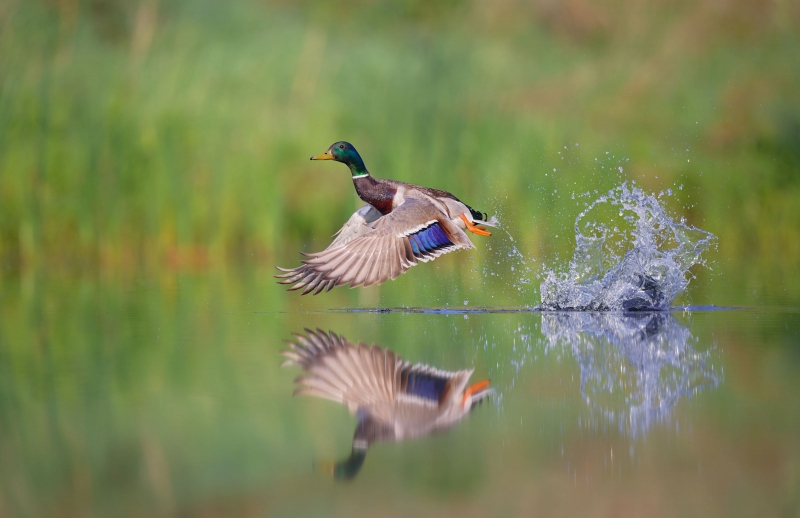
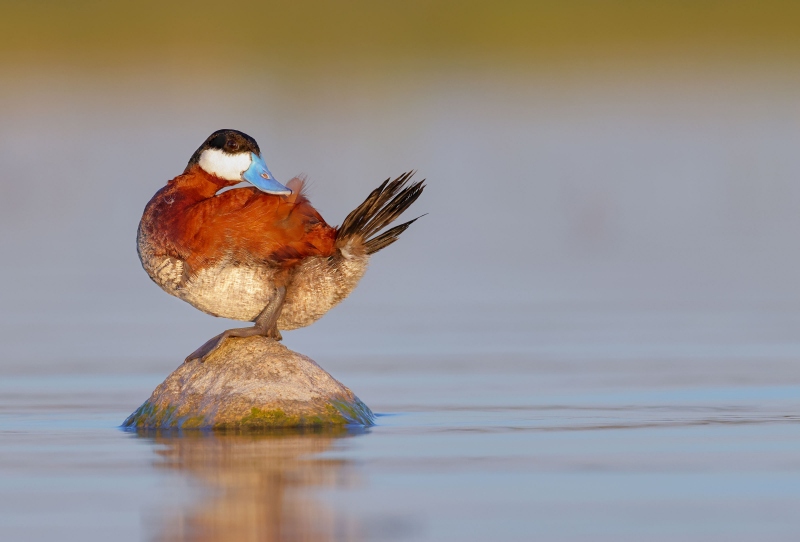
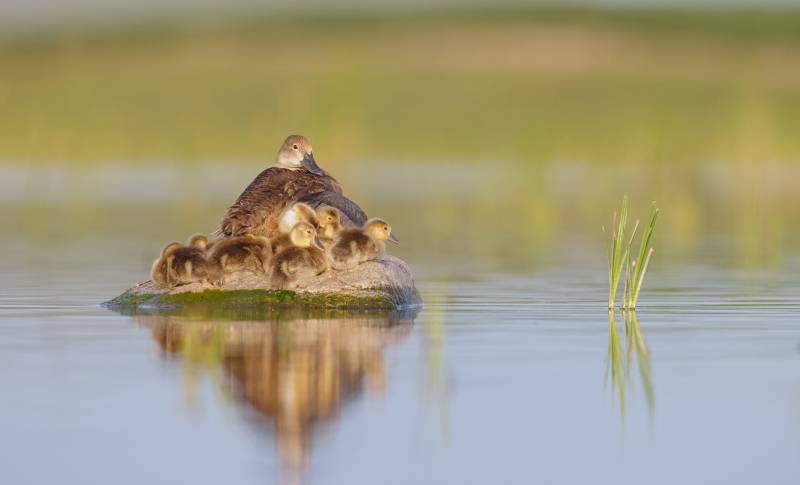













I think image six of the duck taking to flight….it has action, color…it is the WHOLE image, every part….not just one or two things.
The only thing I would have done differently is to crop more on the right so the bird is not centered in the image. But that is me…my personal taste….each to their own.
Fantastic image.
Bp
Hi, Artie and Kevin. All fine images, but #4, wood duck, and #6, mallard taking off, are my favorites.
The Western Grebe (wonderful color and the water drops on the back) and Wood Duck (wave, wake, ripple, and reflection) are my favorites. Only nit I can see with the Mallard is some brown in the green head, maybe a little past peak breeding plumage. Kevin’s floating-blind results are stunning, but the gators are bellowing here, so not for Florida.